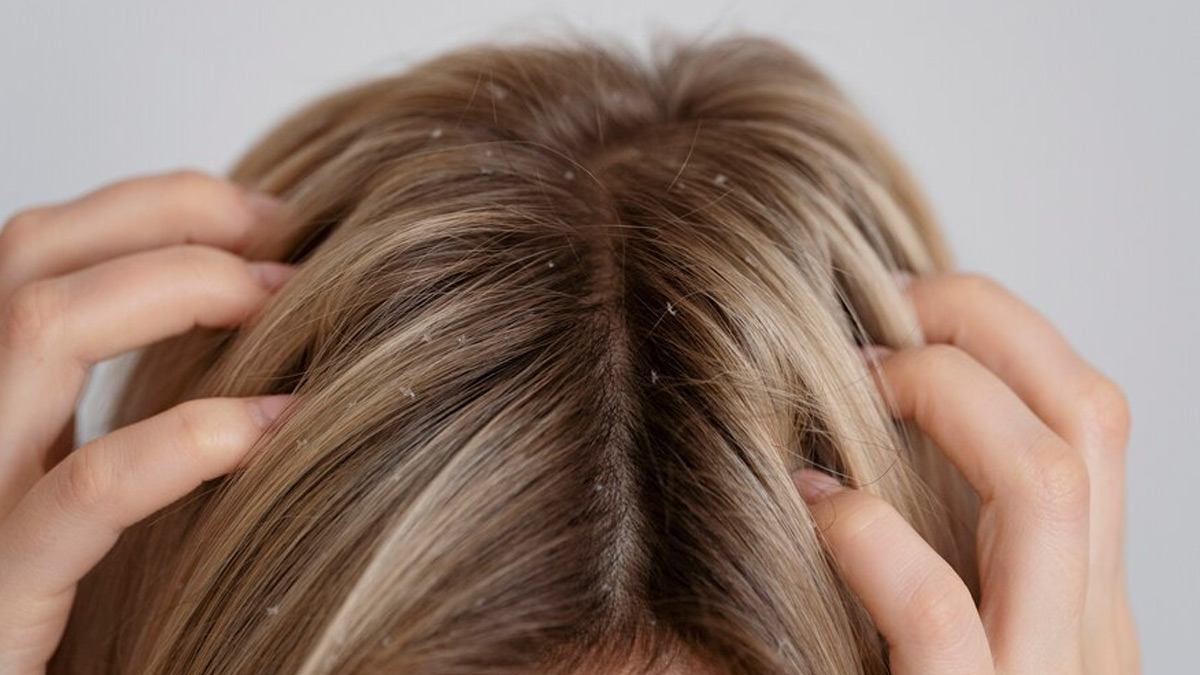
Dandruff is a common scalp and hair problem, which can be characterized by white flakes in the hair and leads to an itchy scalp and inflammation. Though it has nothing to do with the seasons, the condition can get much worse in winter as the dry air outside sucks the moisture out of the scalp in a quicker fashion during this season. So, how do we treat it?
The first step to treating dandruff and related inflammation is to identify the type you’re dealing with and the factors contributing to it.
Types Of Dandruff
Here are the six major types of dandruff and how to stop them.

Dry Scalp Related
If you are noticing a feeling of tightness on the scalp and white, round flakes in the hair, you are suffering from dry scalp-related dandruff. One of the major reasons for a dry scalp can be a significant drop in the temperature and the dry air that comes with it. Continuous use of sulfate shampoos can be a contributing factor and aggravate the condition as well.
Oily Scalp Related
Oily scalp-related dandruff can be characterized by greasy hair along with yellow patches on the scalp, yellowish large dandruff flakes, and continuous itching. The sebum production in the scalp moisturizes the hair and keeps the drying of the skin and scalp at bay. However, if the sebum production becomes excessive, and gets mixed with dirt and dead skin cells, it leads to oily scalp-related dandruff.
Also Read: 9 Kitchen Remedies To Get Rid Of Dandruff
Product Buildup
If you are noticing big whitish or yellowish flakes on the scalp along with irritation and hair fall, it is caused by dandruff induced by product buildup. Overuse of styling products like leave-in conditioners, hair sprays, mousses, gels, serums, pomades, and more causes accumulation on the scalp which when mixed with dirt and dead skin cells leads to dandruff.
Psoriasis Induced Dandruff
Psoriasis on the scalp is a common condition that can be characterized by silver-colored scaly patches, thick white flakes on the scalp, redness, and mild itching. Psoriasis is a skin condition where skin cells build up and create scaly patches on areas around elbows, knees, lower back, scalp, and neck.
Fungal Induced Dandruff
Fungal dandruff is a result of a scalp infection caused by a fungus named Malassezia globosa. If not treated, this infection spreads quite rapidly especially when the scalp is oily because of excessive sebum production. This fungus produces oleic acid which increases the turnover of skin cells, leading to white or yellowish dandruff flakes and itchiness.
Seborrheic Dermatitis
If you are noticing big white, or yellowish dandruff flakes, and scaly patches, with greasiness, redness, and irritation, it might be a symptom of Seborrheic Dermatitis. It is a skin disease that can develop on the parts of the body that have a higher concentration of sebaceous glands.
Also Read: Tips To Get Rid Of Dandruff In Monsoon
Though not contagious, dandruff can be an embarrassing situation, especially in a public setting. As a matter of fact, it can be easily treated with the right over-the-counter products as well as other natural methods. Pick the products based on your skin type and make sure it has ingredients like Salicylic acid, Selenium sulfide, Ketoconazole, Luliconazole, Zinc pyrithione, etc.
If you are someone who is more inclined towards natural methods instead of chemical treatments, fenugreek seeds, apple cider vinegar, aloe vera, olive oil, coconut oil, and tea tree oil have proven to curb dandruff and related inflammation.







